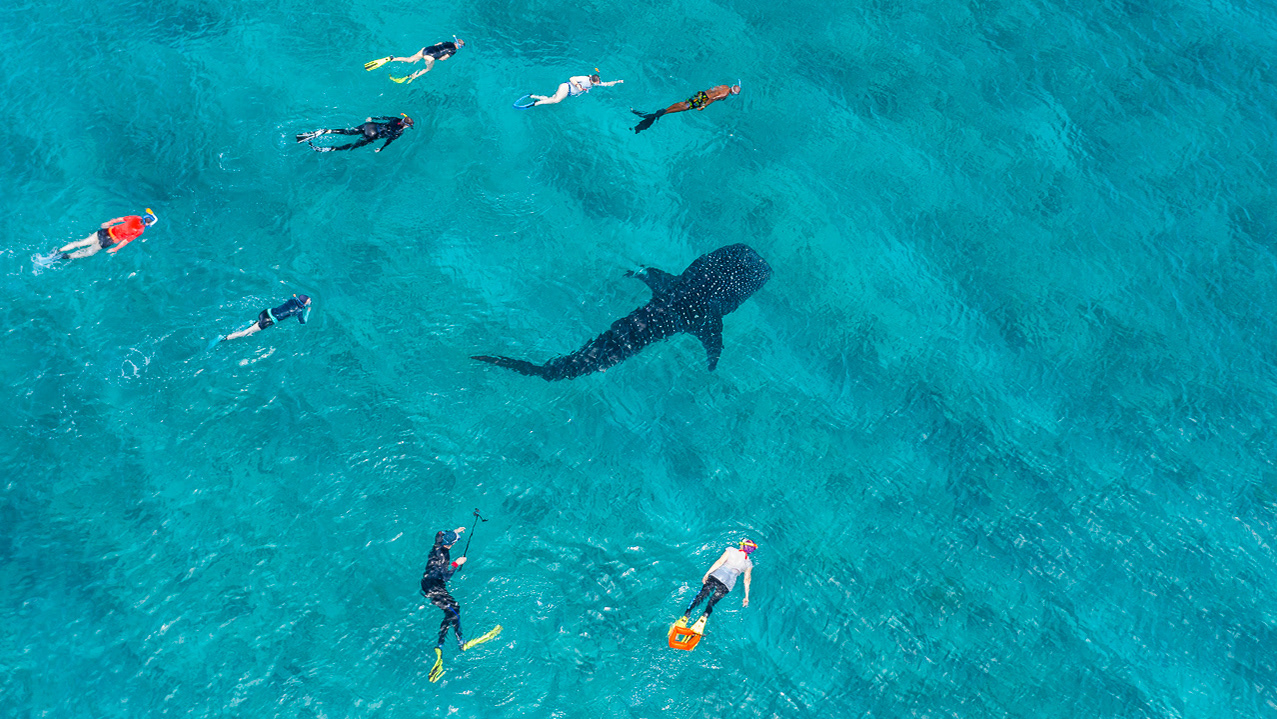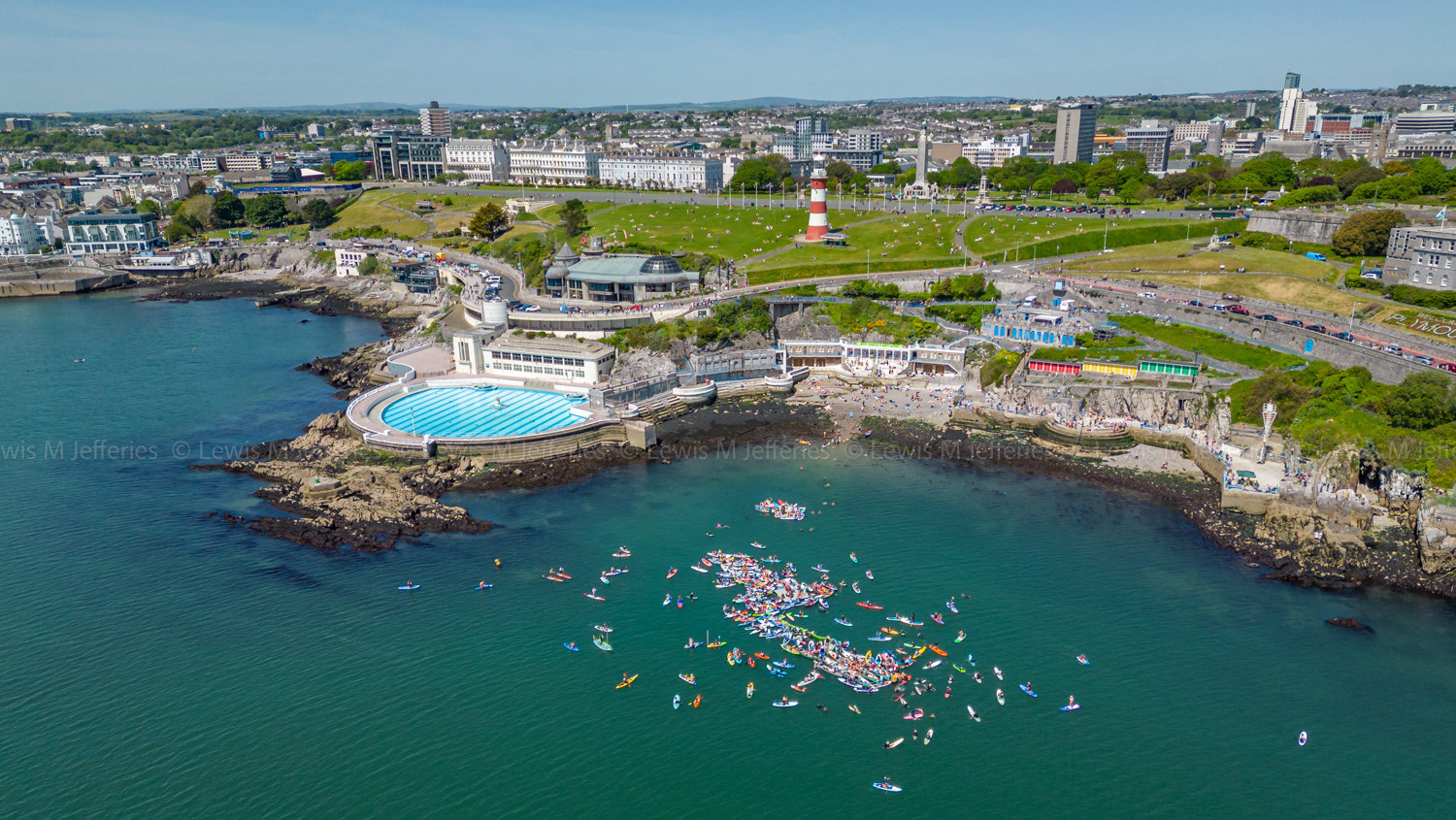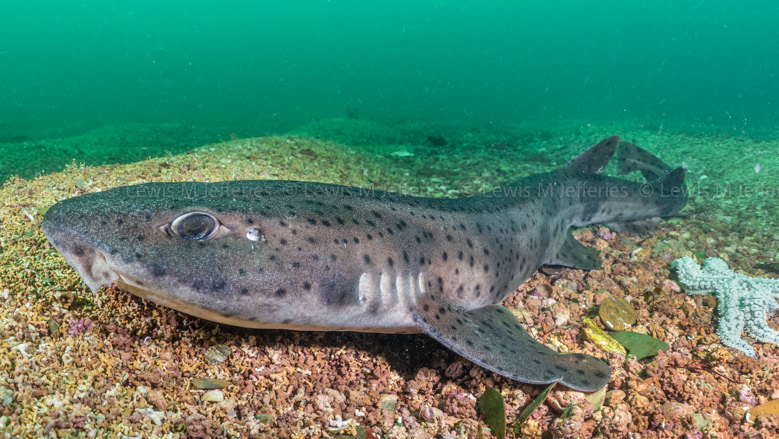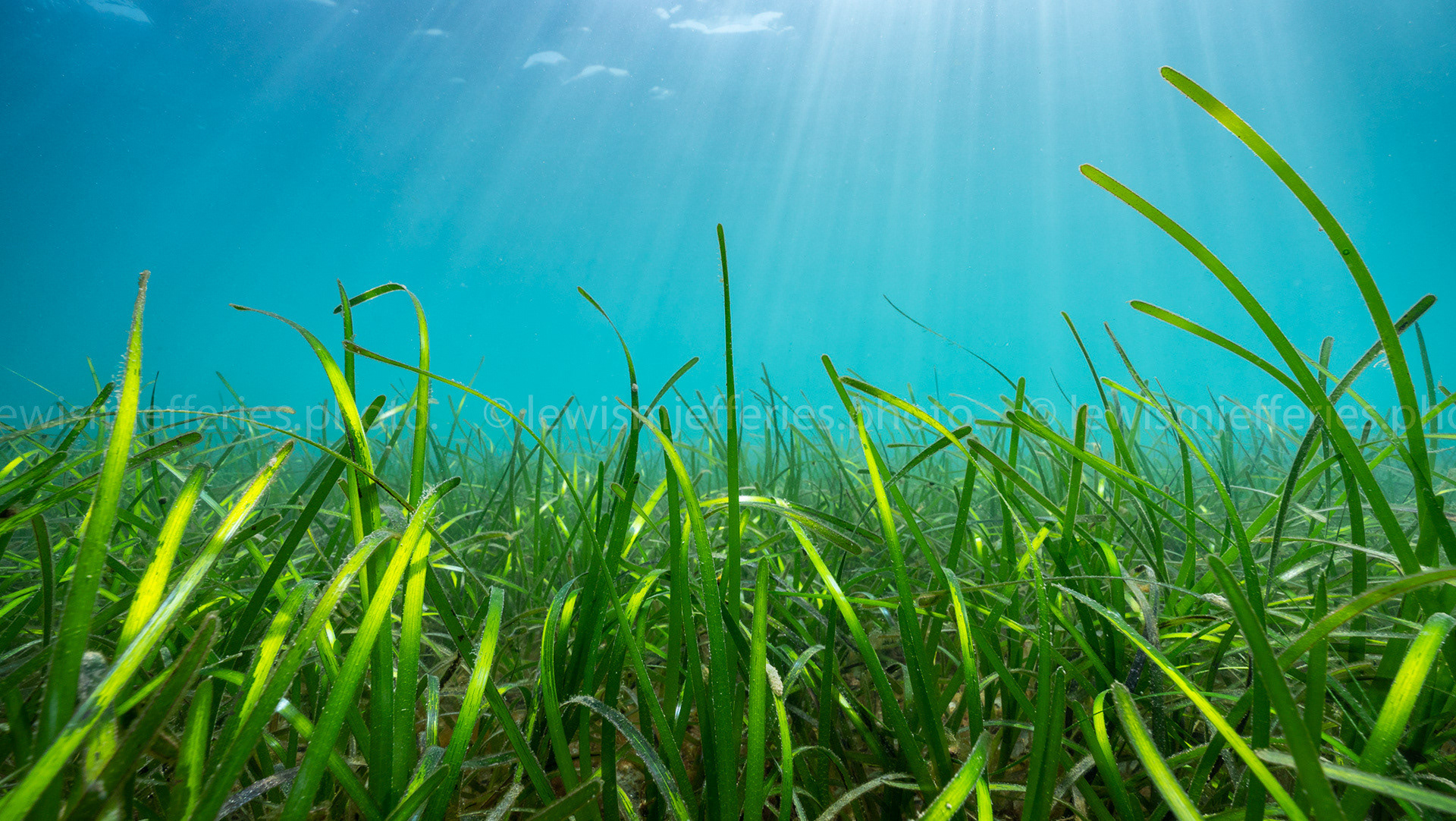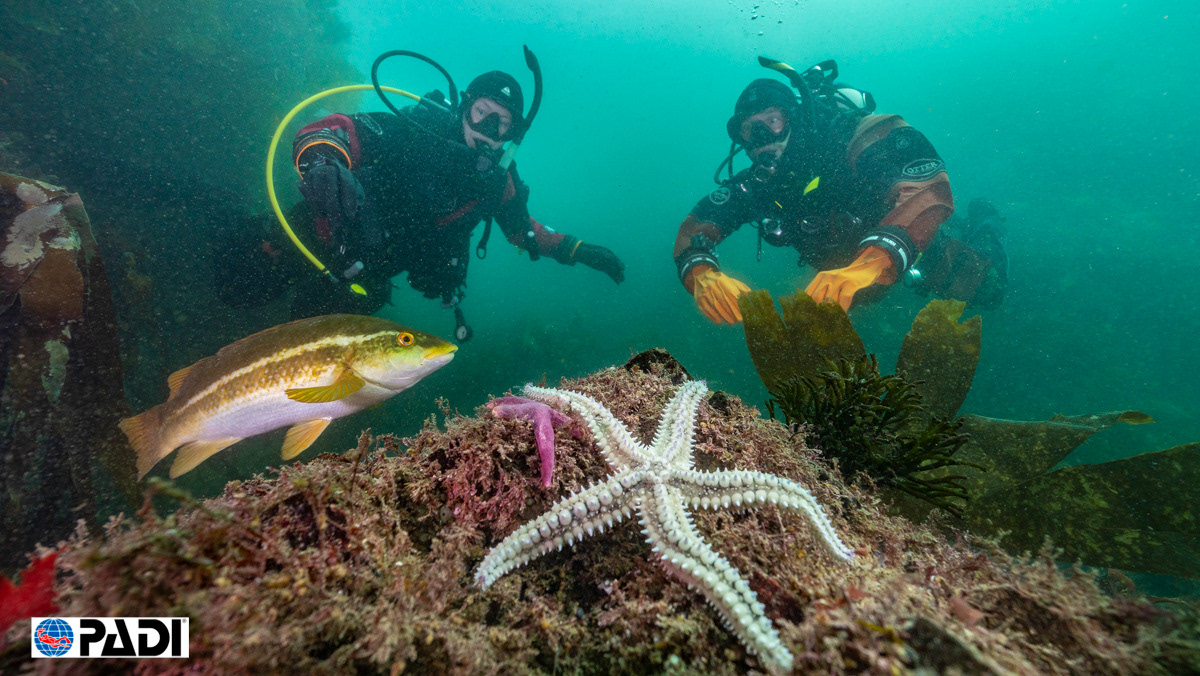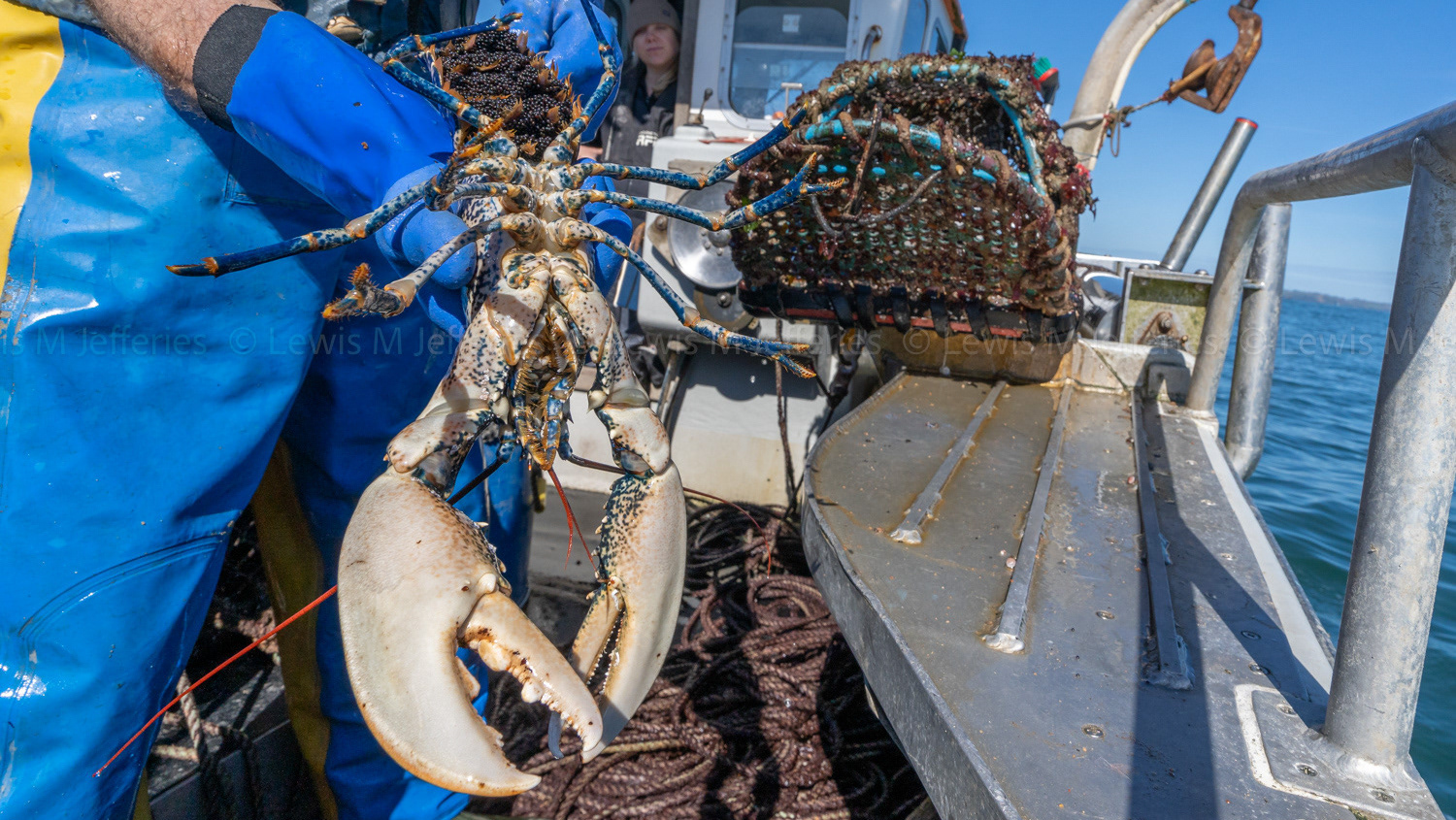In the summer months Spiny spider crabs gather in shallow protected bays, in large numbers around the south of England, to moult their shells. Once they have moulted, their new shell is soft which leaves them vulnerable for a few days until it hardens. By gathering together scientists believe it helps protect them from potential predators through safety in numbers.
Published in Oceanographic magazine, BBC Countryfile magazine, DIVE magazine, Scuba Diver magazine & Plongez magazine both print and digital publications.

As a young teenager learning to scuba dive in 2001, I remember one of my first open water dives off a pebble beach in east Devon. We made entry into the water from shore and proceeded offshore to gain depth - at first swimming over a largely featureless, sandy seabed until a large shadow came into view, and trailed strangely off into the distance. As we neared the dark shape it became clear that this was not a change in the topography of the seabed into a rocky reef or bed of seaweed - but a writhing mass of individual animals. At just 13 years old, I had not ever seen creatures like this before…huge red, spider-like animals with large oval crown-like shells that were adorned with spikes, and ten long appendages - the 2 frontal ones of which were tipped with menacing claws and a flash of white down the front edge that made them appear like samurai swords. The scene was like something out of a science fiction film – hundreds of creatures gathered, scuttling along the seabed, and clambering over one another. Suffice to say, that dive for this young boy was an incredibly memorable one, and over the following years - as my passion for diving, marine life and photography grew - I was eager to see this spectacle again, but this time, with camera in hand!
Fast forward 20 years and I’m on the northwest coast of Cornwall. It is peak holiday season, and the beach is packed, full of tourists that have flocked from all over the country to spend their holidays at one of the most popular places in the county - St. Ives. This small, picturesque Cornish town is famed for its beautiful golden sands; for its clear turquoise waters; for surfing; art and coastal scenery. Yet it is below the waves here - just metres from the bustling town and beaches - that this most remarkable natural spectacle takes place every year.
I had been anticipating this event all year after hearing that this was a reliable location, and for some weeks had been looking around for any signs that a gathering was starting to happen, both underwater, and above from local water users. Then in mid-August the news I was hoping for came through: a local surf photographer based in St. Ives let me know that he had spotted a very large group of crabs around 300 meters from the beach. With the fair weather set to change the very next day, I knew it was now or never as I was only going to get this one chance. The forecast was for both rain and wind, and inevitably this would turn the water murky …if I wanted to capture this long-awaited spectacle I had to go immediately. I had to try to photograph the event while the water visibility was still good.
Equipped with freediving gear, underwater camera and flashes, I drove an hour from my hometown on the south coast, and then battled my way through the hordes of tourists on the beach to get to the water. Timing my visit around the low tide, it was just a short swim out to the location and I started to search around…. first of all I spotted a tell-tale trail of empty crab shells drifting around in the current. Then, as I got closer, a large, dark, familiar looking scene, stretched out before me.
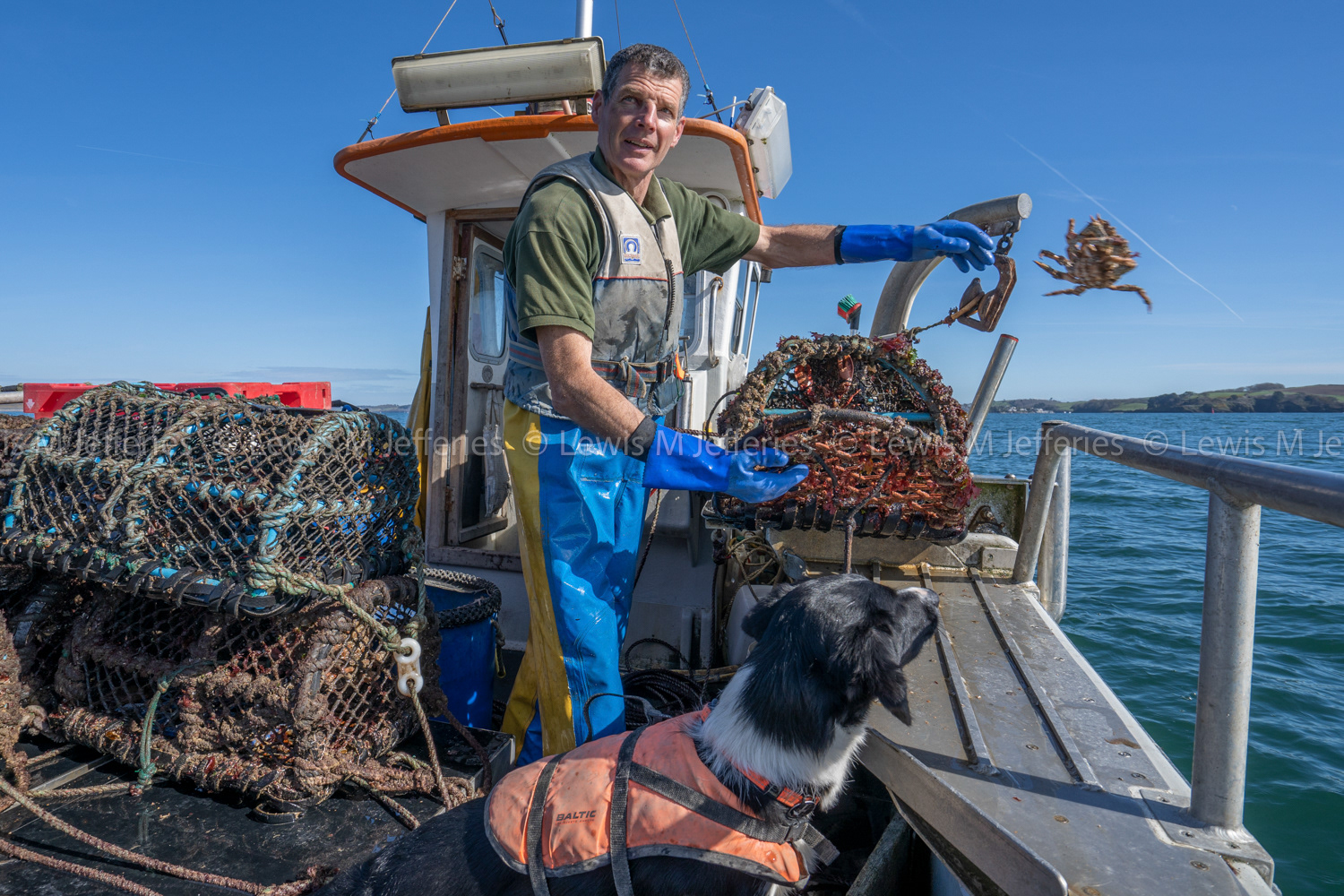

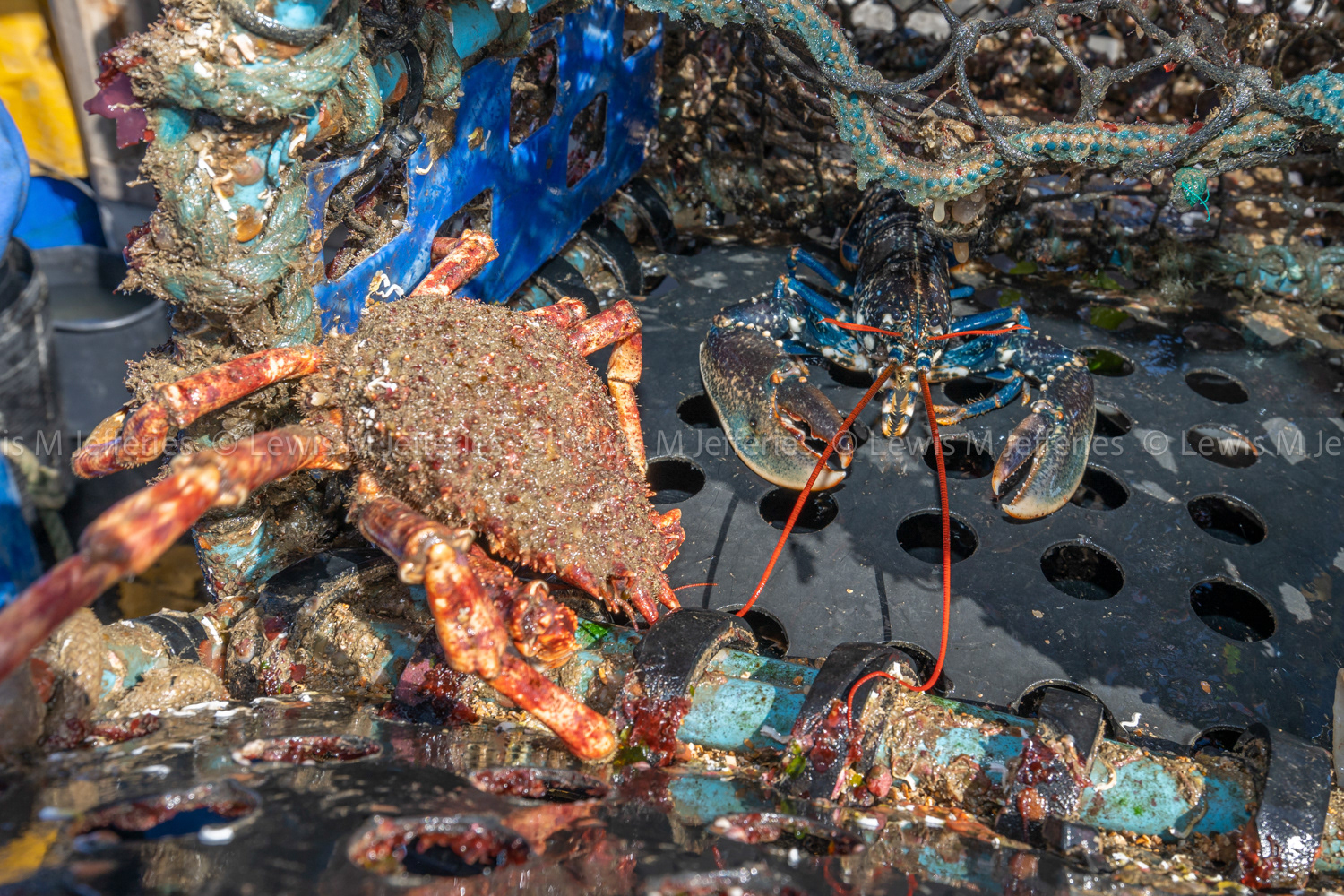
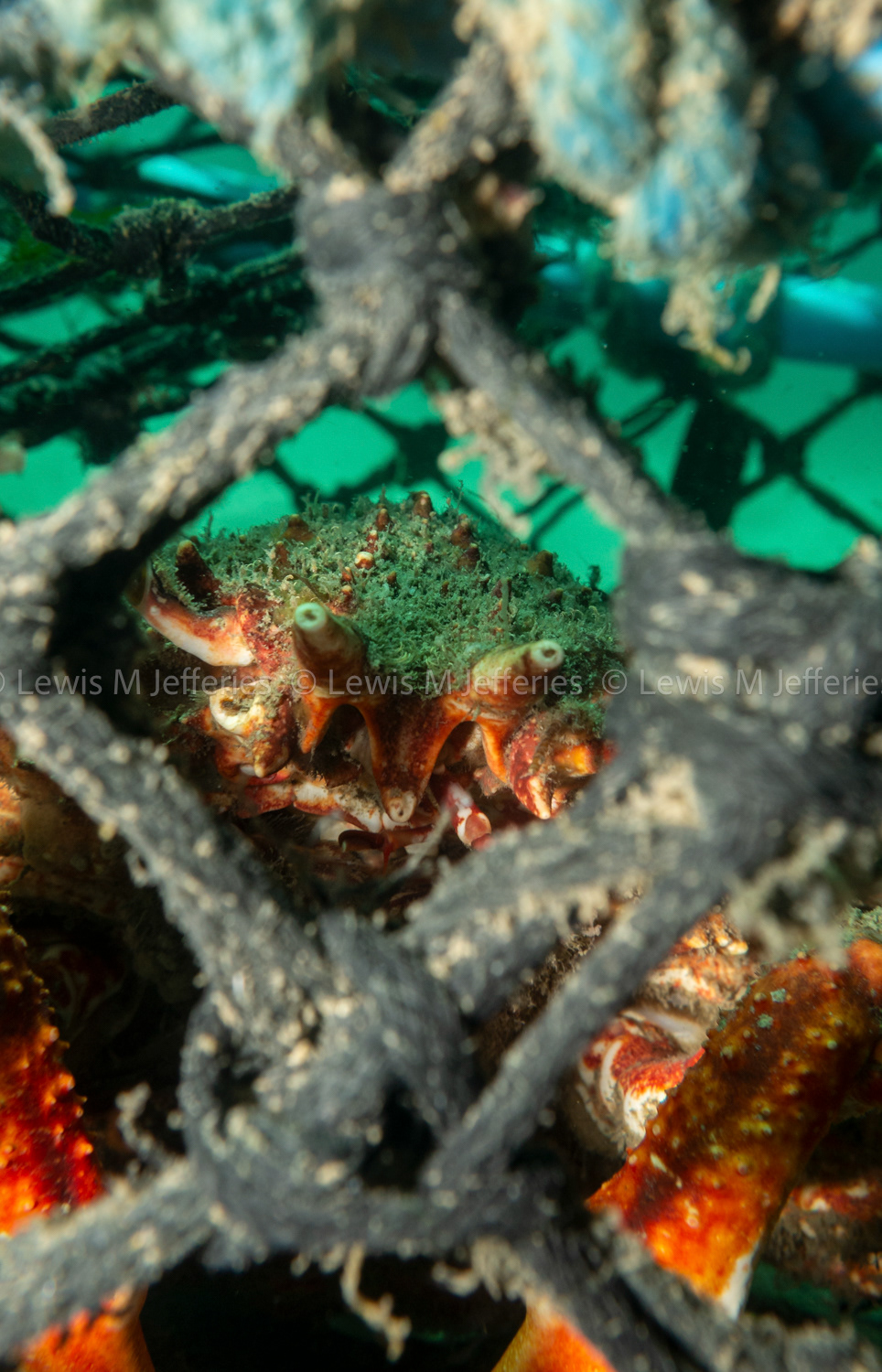
It quickly became clear that I’d found exactly what I had come here to see: two hundred or more spider crabs carpeted the sandy seabed below, amassed at around six meters depth. Freediving down, my excitement rising, I was met with an incredible scene that I can only describe as resembling an alien invasion. An enormous mass of red spider crabs had rallied together, and in their efforts to remain part of the group were stacked 2 or 3 deep in places. Sand had settled atop their carapaces and glistened, the beautiful turquoise St Ives waters rippled around them as the warm summer sunlight filtered through from the surface - the beauty surrounding them somehow slightly incongruous against the scuttling, clambering mass that moved so oddly. Individuals climbed over each other, yet they all appeared to stay as one unit moving slowly and purposefully along the seafloor.
As UK waters warm during the late summer months, these hefty crustaceans head to the shallows in huge numbers to grow. Like all crabs, their bodies are enclosed in a hard un-expandable shell and to mature they must break out of it. As the crabs extract themselves from their old shells and expand their soft new flesh to grow, they are very vulnerable to predation for a few days until their exo-skeletons harden. Gathering like this in large numbers helps individuals protect themselves from potential predators and gives them the best possible chance of survival during this period of vulnerability. Often the newly moulted crabs can be found in the middle of the group protected by the others around them.
A common species in Cornish waters, the Spiney Spider Crab (Maja brachydactyla) is a species confined to the eastern Atlantic but was formerly grouped with the Mediterranean species Maja Squinado, and the identification remains confused among some. Since 2009 – after results of morphological and genetic analysis - they are now identified as separate species. (Neumann, 1998, Sotelo et al., 2008, Sotelo et al., 2009) The Spiney Spider Crab is well known for its striking orange and red colouration, spiky long legs, and dagger like claws that can span up to one meter across. They are believed to be the longest living of all crabs, with some individuals estimated to be 100 years old and inhabiting a variety of depths, from shallow rockpools to as deep as 750 meters or roughly 2400 feet! The sexes are differentiated with males of the species possessing much larger claws than females, it is also believed that females need to moult and be soft to mate, so these gatherings could help enable, or be the prelude to reproduction as the newly receptive females would also have plenty of partners to choose from during an aggregation. They go on to lay around 1.5 million eggs per season.
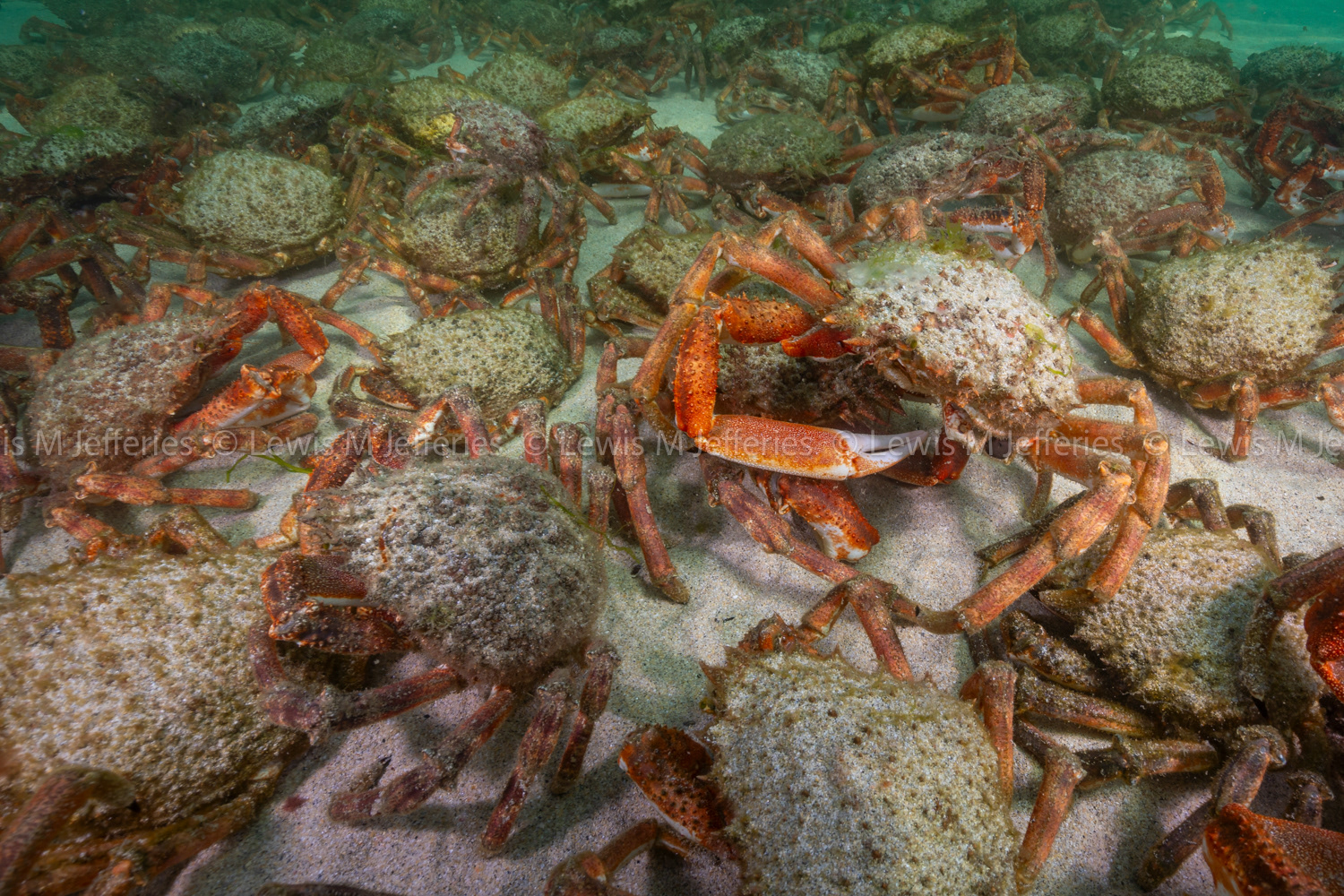

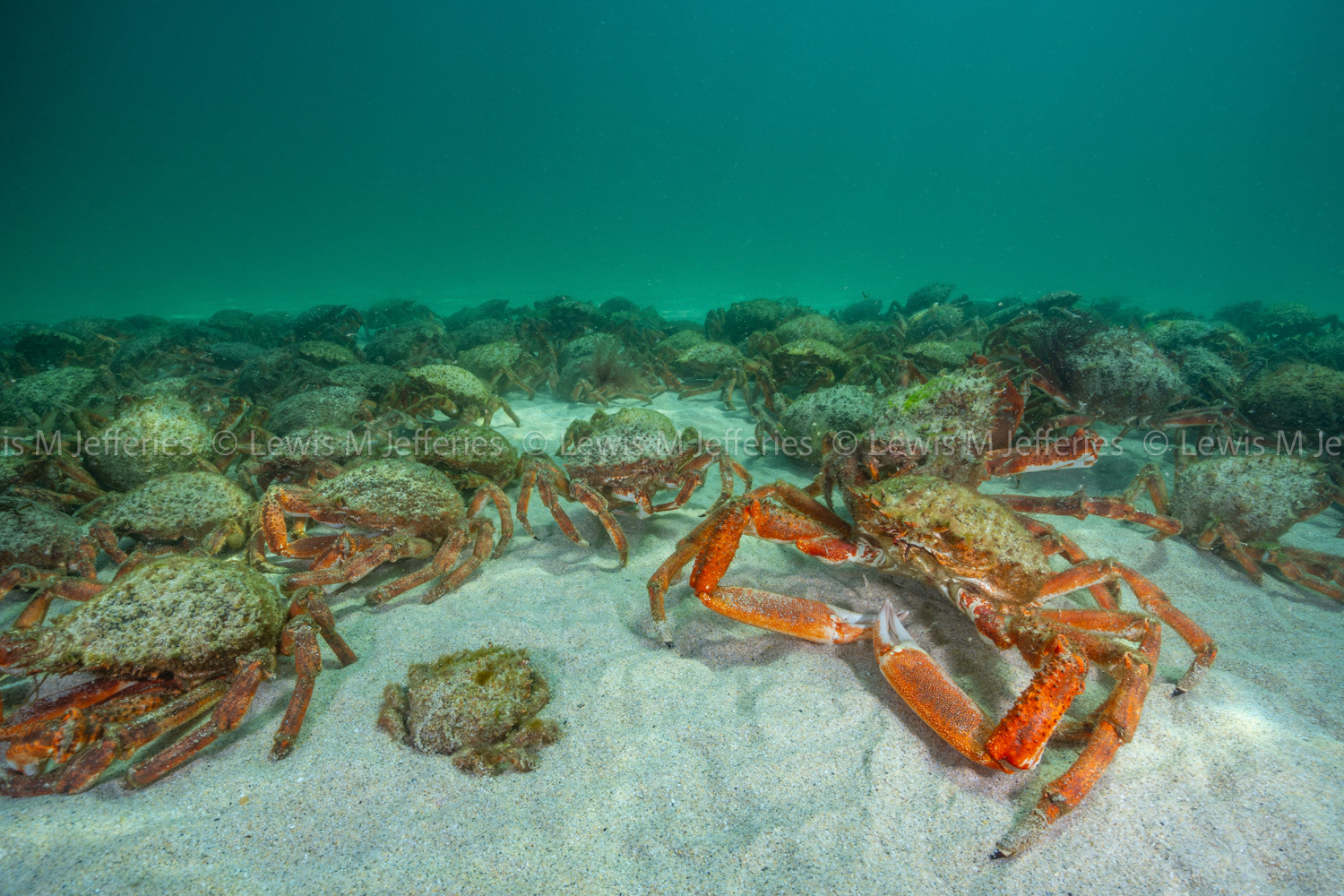
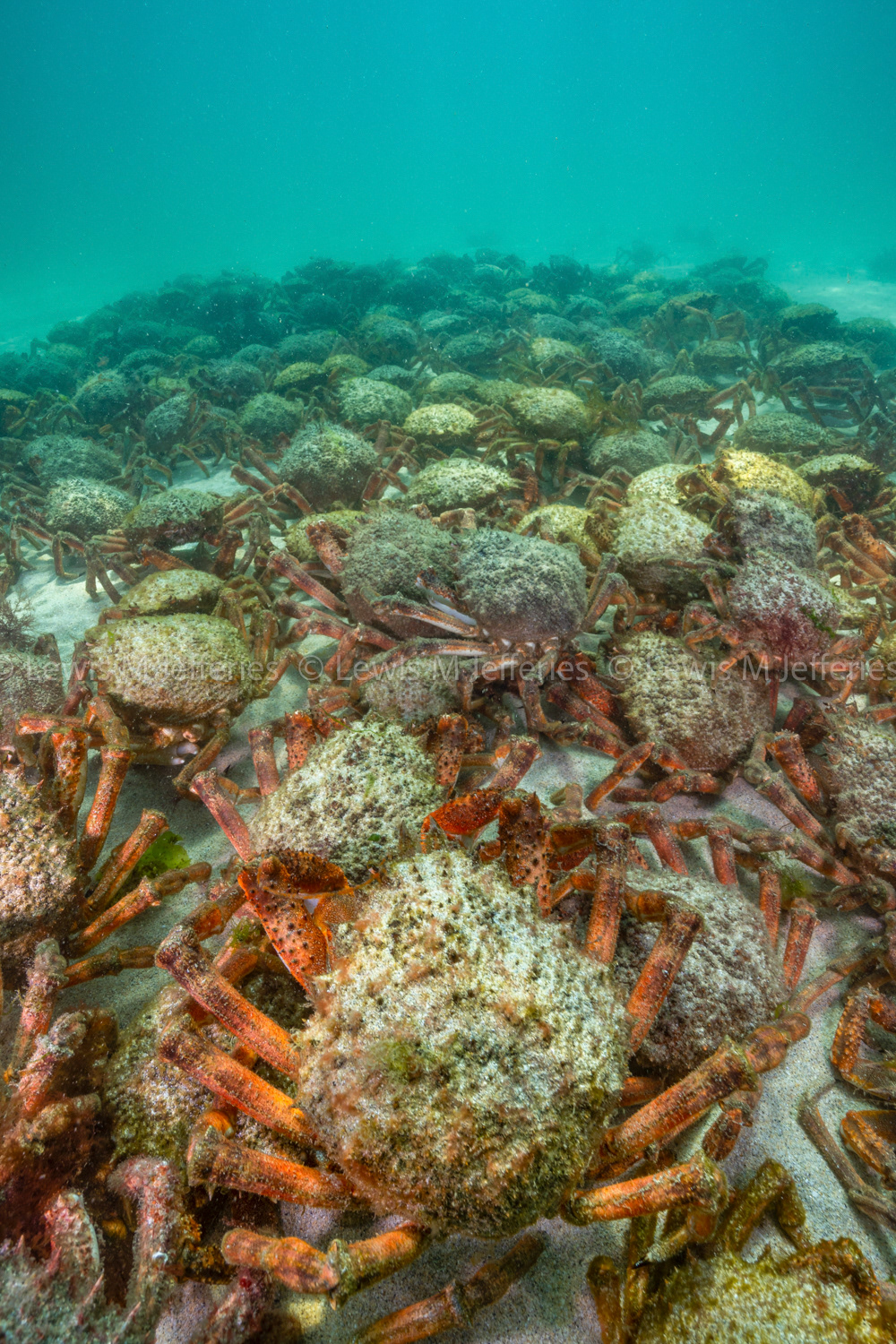
Spider crabs are a commercially valuable species and have sweet white meat found in their legs, claws and body. However, there has never been a huge demand for them in the UK as the edible flesh is believed to be more difficult to pick from the shell than the more popular Brown Crab. Further, a survey conducted by the Cornish Fish Producers Organisation (CFPO) among chefs and consumers concluded that the name ‘Spider’ was putting people off. So, a rebranding ploy designed to increase the popularity from consumers was brought in renaming them as ‘Cornish King Crabs’ - a grand yet fitting title earned from their spikey, crown-like carapace. Spider crabs thrive in our waters and are listed as a sustainable species to catch as many of the animals seem to migrate here in the spring and summer months from deeper waters. However, although we are gradually starting to see a few more restaurants and fish mongers serving up spider crab in the UK, a staggering 95% of the spider crab that is landed here is shipped to continental Europe where the market for them is larger and more profitable. In an attempt to prevent overfishing, and sustain the species, all crab landed in the UK has a minimum landing size, where they are measured and thrown back if undersize and egg bearing females cannot be harvested either.
Cornish fisherman Ned Bailey – who has been operating in the waters of Falmouth Bay for the last four decades says ‘they are a sustainable and easy species to catch, more so than the much more popular and well-known brown crab. But the demand for them in this country is very low, so the price fishermen receive for them is tiny in comparison. Any national market that we could develop for them here we would be a good thing as the global market is somewhat precarious.’ This points to the fact that we have a tasty, sustainable species here that we can reliably catch year-round and which would likely help take the pressure off other dwindling species, so perhaps more should be done to market them here. Ned has also observed a change in their migrating behaviours. ‘The numbers caught these days seem to be quite steady throughout the year now, but traditionally the crabs were known to migrate around March - which we fishermen used to call the “‘March March”’ or we would say the “Red army is on the march” when numbers would boom and the majority of a year’s catch would be landed.’ Ned says that he doesn’t seem to notice the mass migration in March any longer -speculating that now there is a smaller temperature differential between the summer and winter months - so any migrations seem to happen more steadily, throughout the year, rather than in one go. This could be a result of warming sea temperatures - suggesting that if the crabs can tolerate our winter months they no longer need to migrate away to warmer waters.
Spider crabs are masters of disguise and will utilise their long, dexterous front limbs to rub pieces of seaweed against their shells until they attach and start to grow, which creates remarkable camouflage that helps them blend into the reef. As secondary level consumers, crabs are very important for the ecosystem: scavenging on dead animals, they keep the seabed clean, and help recycle decomposing matter back into the food chain. They feed on decomposing plant matter such as seagrass and algae but will also consume most of what crosses their paths. Preyed upon by sharks, large fish, seals and shore birds, they themselves are also an important food source for a variety of different animals so it is no wonder that they employ their ‘safety in numbers’ tactic during moulting!
Spiney Spider crabs are usually well known for their defensive behaviour and are often seen lunging in their attempts to look menacing if any diver gets too close. However, during this moulting period, they are rather more timid than usual and don’t possess their regular gutsy demeanour - a fact I am very thankful for, as the idea of hundreds of them lunging at me as I try to photograph them is quite a daunting prospect! These crabs are normally solitary creatures and I see them regularly; I must have spotted them on almost every dive in Cornwall, but I had never seen them in these great numbers.


After a couple of days, the crabs’ new ‘soft shells’ will have hardened, and this exoskeleton once again becomes the tough armour-plating for which they are better known. It is only at this point that the group will dissipate and go back to their solitary lives, scavenging from the seafloor until the following year when they will once again join forces to help each other grow at this most crucial stage of their lives. How they all know to come together at the same time, and what triggers this phenomenon, we can only speculate and, who knows, it may well stay one of the secrets of the sea.
As I surfaced from my last immersion a tour boat and jet ski whizzed past me causing quite a commotion and choppy waves in their wake. I returned to the packed beach that was still full of holiday makers, and as each one seemed to be jostling for their own individual space, to claim territory amongst the small patches of sand, their actions seemed a stark contrast to the harmony and cooperation I had been privileged to see beneath the waves. Although the incredible gathering of marine animals I had just witnessed had conjured images of an alien invasion, I could not help but think it is us who are the invaders, encroaching on this beautiful underwater kingdom that has been working in harmony for millennia. It seems to me that there is much we can learn from the creatures beneath the waves.

